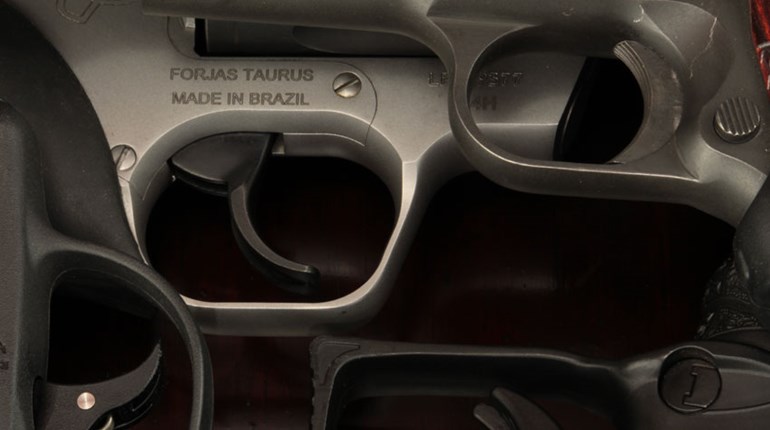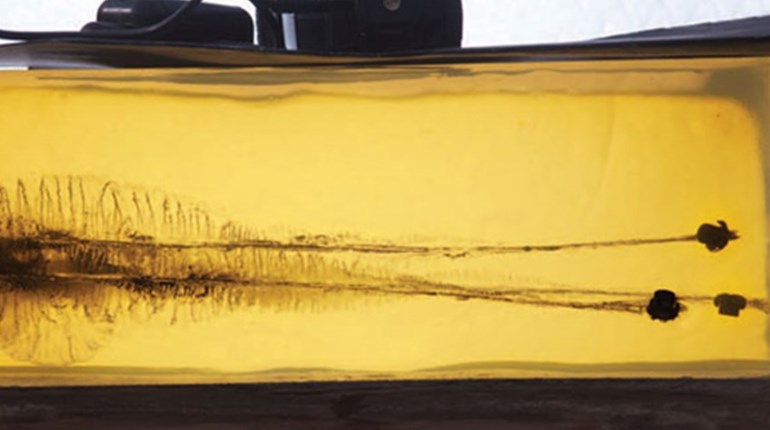
For many, a single-shot gun is their first gun. A single-shot is a manually loaded and operated action without a magazine. It is capable of being loaded with and firing only a single shot at a time. Here are five types of single-shot mechanisms.
Falling Block
An operating lever under the action moves the bolt vertically in slots cut into the receiver walls. Moving the bolt upward to the bore axis locks the action; moving the bolt downward unlocks the action and recocks the striker. Most modern single-shot rifles employ this type of system, as it is strong and can easily handle cartridges that generate high breech pressures.
Pivoting Block
The breech block is hinged to the receiver at the rear, leaving the front free to pivot up and down. An operating lever under the action pivots the forward part of the breech block upward to lock and downward to unlock. Unlocking recocks the striker. This system is now considered obsolete, as it cannot handle cartridges generating high breech pressures.
Break-open
This type of action is hinged in the middle to allow the barrel muzzle(s) to pivot downward on the frame to expose the chamber(s) for loading or unloading. The barrel(s) lock to the frame by a variety of means including sliding wedges, cuts in the receiver fences, retractable plungers and sliding top wedge locks. The break-open mechanism may have strikers or hammers recocked on opening or have an external hammer that must be manually recocked. This is a very popular system for single- and double-barrel shotguns. It is not normally considered suitable for high-breech-pressure cartridges without added locking devices.
Rolling Block
This system is similar to the pivoting breech block in that it is hinged at the rear, leaving the front free to move. Whereas the pivoting block pivots upward to lock, the rolling block pivots forward to lock and unlock. A small operating handle on the breech block provides finger purchase. The hammer must be recocked manually for each shot. Like the pivoting block, this system is now considered obsolete. It is a weak design not capable of handling modern, high-pressure cartridges.
Trapdoor
This system features a breech block hinged at its upper front to the barrel. To lock this system, the breech block is pivoted downward until it aligns with the bore axis and is held in place by a small lock. To unlock the system, push the small lever to release the lock and swing the breech block upward. The hammer must be manually recocked for each shot. This system is also now considered obsolete as it is also a weak design not capable of handling modern, high-pressure cartridges.
Falling Block
An operating lever under the action moves the bolt vertically in slots cut into the receiver walls. Moving the bolt upward to the bore axis locks the action; moving the bolt downward unlocks the action and recocks the striker. Most modern single-shot rifles employ this type of system, as it is strong and can easily handle cartridges that generate high breech pressures.
Pivoting Block
The breech block is hinged to the receiver at the rear, leaving the front free to pivot up and down. An operating lever under the action pivots the forward part of the breech block upward to lock and downward to unlock. Unlocking recocks the striker. This system is now considered obsolete, as it cannot handle cartridges generating high breech pressures.
Break-open
This type of action is hinged in the middle to allow the barrel muzzle(s) to pivot downward on the frame to expose the chamber(s) for loading or unloading. The barrel(s) lock to the frame by a variety of means including sliding wedges, cuts in the receiver fences, retractable plungers and sliding top wedge locks. The break-open mechanism may have strikers or hammers recocked on opening or have an external hammer that must be manually recocked. This is a very popular system for single- and double-barrel shotguns. It is not normally considered suitable for high-breech-pressure cartridges without added locking devices.
Rolling Block
This system is similar to the pivoting breech block in that it is hinged at the rear, leaving the front free to move. Whereas the pivoting block pivots upward to lock, the rolling block pivots forward to lock and unlock. A small operating handle on the breech block provides finger purchase. The hammer must be recocked manually for each shot. Like the pivoting block, this system is now considered obsolete. It is a weak design not capable of handling modern, high-pressure cartridges.
Trapdoor
This system features a breech block hinged at its upper front to the barrel. To lock this system, the breech block is pivoted downward until it aligns with the bore axis and is held in place by a small lock. To unlock the system, push the small lever to release the lock and swing the breech block upward. The hammer must be manually recocked for each shot. This system is also now considered obsolete as it is also a weak design not capable of handling modern, high-pressure cartridges.







































